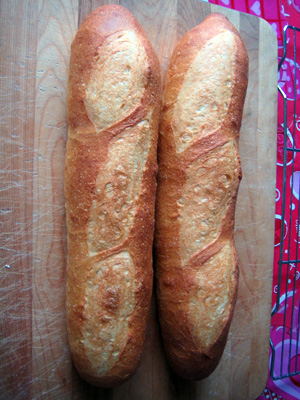Home Milled Flour
For those of you who have followed bwraith’s adventures in artisan milling – and I commend them to all – let me say that I am nowhere near his level of attention to detail and analytics. I just thought I might post as I’ve taken an approach that is more accessible to the average home miller.
I am milling on a Diamant 525 which is hand powered and uses metal grinding plates. I hand sift using plastic sieves. Here is a picture:
- Log in or register to post comments
- 18 comments
- View post
- proth5's Blog

 K.A. Rustic Country Boule-1
K.A. Rustic Country Boule-1 K.A. Rustic Country Boule-2: Interior
K.A. Rustic Country Boule-2: Interior
